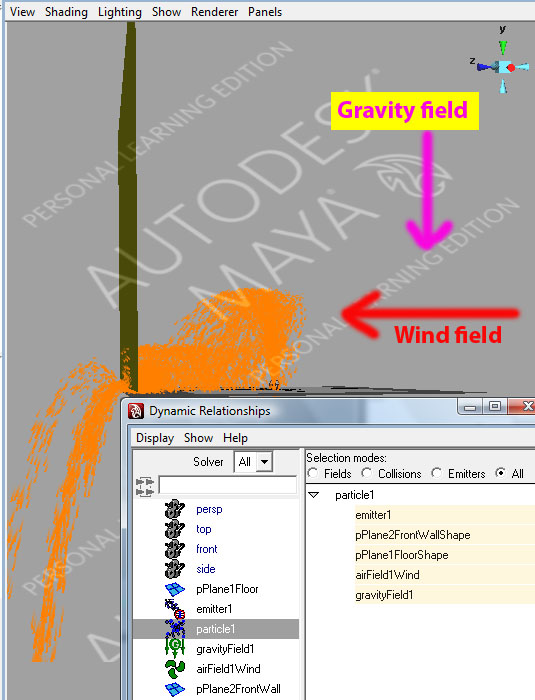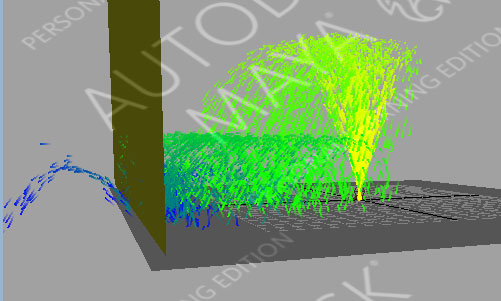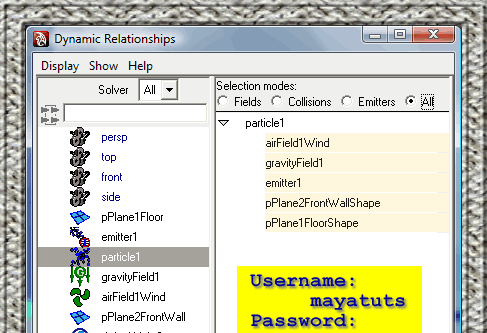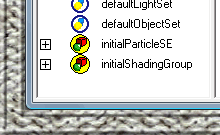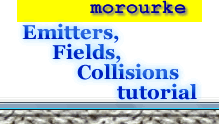Special Effects with Maya: Particles
- Particles in Maya can be produced by an emitter or can be created with the particle tool. The Dynamics menu set will be used for the first time on October 31st, 2008.
- Particles are the heart of many special effects such as fire, snow, rain and smoke, for example.
- Particles are just points in space. They have no surface information like the NURBS or the Polygonal geometries that we have studied.
- The particleShape object or node is the collection of all of the individual particles that have been emitted so far, if the particles are produced from an emitter. There is a nice analogy with the geometric objects. The vertices of a geometric object are part of a collection and the one shape node of any polygonal or NURBS object has a collection of many vertices. Particles are components of their one particleShape node.
- Click on the link above to get to the Michael O'Rourke tutorial on
particle emitters and learn how to add a gravity field and a wind field and collision behavior to the particle collection.
The Emitters, Fields, Collisions tutorial is a link to the O'Rourke tutorial.
- There are 7 kinds of emitters available in Maya: Directional; Omni; Volume; Curve; Surface; Per-Point; and Texture.
- Fields are forces that particles can be subjected to. Gravity is a field. Wind is a field, but it is one type of Air field.
- Particles can collide with an object.
- The above Dynamic Relationships window is shown by going to the Windows menu, Relationship Editors submenu, Dynamic Relationships command.
- The next tutorial you should try is the followup tutorial: Particle Properties. It is also by Michael O'Rourke and also has the userid mayatuts and password morourke. In this tutorial, you will learn how to give the particles a color and make them streak and last only a short lifetime (LifeSpan Mode Constant instead of Live Forever).
- Particle attributes fall into two categories: Per Particle (Array) and Per Object.
- Chapter 12: Maya Dynamics - Read the following sections: An Overview of Dynamics; Emitting Particles; and Particle Dynamics.
